The Dkif.kafd.gdn is a web site that shows undesired ads and can reroute to other ad web-pages. If the Firefox, MS Edge, Chrome and IE opens automatically to this web-page then it is possible that your personal computer has become a victim of the PUP (potentially unwanted program) from the adware (also known as ‘ad-supported’ software) category. The adware is an undesired software that is going to show you a ton of pop-ups and deals. Of course, it is not a malicious software or virus in the “general meaning” of this word. It’ll not delete or damage your files, but it can modify some system’s settings or download and install other harmful apps. So, you’d better to remove adware using the step-by-step guide below and thus delete Dkif.kafd.gdn popup ads.
The adware that responsible for web-browser redirect to the annoying Dkif.kafd.gdn webpage, can attack your PC system’s browsers such as the Firefox, Google Chrome, Edge and Internet Explorer. Maybe you approve the idea that the popup advertisements from it is just a small problem. But these intrusive Dkif.kafd.gdn advertisements eat system resources. The worst is, it be able to gather your surfing history and user data, including passwords and credit card numbers. In the future, your personal info can be transferred to third parties.
The adware often alter all internet browser shortcuts which located on your Desktop to force you visit various intrusive ad websites. As a result, your internet browser can still redirect you to an annoying ad website despite your personal computer is actually clean of adware and other malicious software.
Thus, it’s clear that the presence of adware on your PC system is not desirable, and you need to clean up your personal computer as quickly as possible. Follow the guidance below in order to get rid of Dkif.kafd.gdn popup advertisements.
Remove Dkif.kafd.gdn pop up ads
There are a few methods that can be used to delete Dkif.kafd.gdn popup ads. But, not all potentially unwanted apps like this adware can be completely deleted using only manual ways. In many cases you’re not able to uninstall any adware utilizing standard Windows options. In order to remove Dkif.kafd.gdn pop up advertisements you need complete a few manual steps and use reliable removal tools. Most cyber security specialists states that Zemana AntiMalware, MalwareBytes AntiMalware (MBAM) or HitmanPro tools are a right choice. These free programs are able to find and remove Dkif.kafd.gdn popups from your personal computer and restore your internet browser settings to defaults.
To remove Dkif.kafd.gdn, execute the steps below:
- How to manually remove Dkif.kafd.gdn
- Remove adware through the MS Windows Control Panel
- Disinfect the internet browser’s shortcuts to get rid of Dkif.kafd.gdn redirect
- Remove Dkif.kafd.gdn redirect from Google Chrome
- Get rid of Dkif.kafd.gdn from FF by resetting internet browser settings
- Remove Dkif.kafd.gdn pop up advertisements from Microsoft Internet Explorer
- Delete unwanted Scheduled Tasks
- Dkif.kafd.gdn redirect automatic removal
- Block Dkif.kafd.gdn pop-up advertisements and other intrusive web pages
- How to Dkif.kafd.gdn pop up advertisements get installed onto personal computer
- To sum up
How to manually remove Dkif.kafd.gdn
The few simple steps will help you get rid of Dkif.kafd.gdn redirect. These Dkif.kafd.gdn removal steps work for the IE, Google Chrome, Edge and FF, as well as every version of Microsoft Windows operating system.
Remove adware through the MS Windows Control Panel
The process of adware removal is generally the same across all versions of Windows OS from 10 to XP. To start with, it is necessary to check the list of installed applications on your computer and remove all unused, unknown and dubious programs.
Press Windows button ![]() , then press Search
, then press Search ![]() . Type “Control panel”and press Enter. If you using Windows XP or Windows 7, then press “Start” and select “Control Panel”. It will open the Windows Control Panel as shown on the screen below.
. Type “Control panel”and press Enter. If you using Windows XP or Windows 7, then press “Start” and select “Control Panel”. It will open the Windows Control Panel as shown on the screen below.
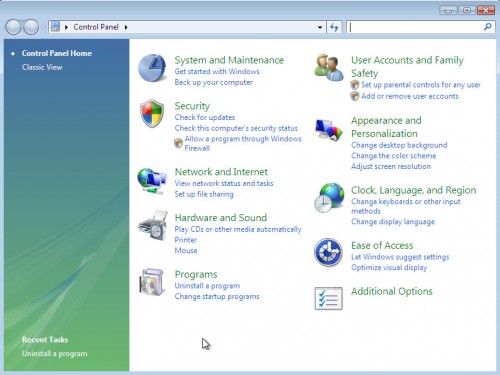
Further, click “Uninstall a program” ![]()
It will open a list of all programs installed on your personal computer. Scroll through the all list, and uninstall any questionable and unknown apps.
Disinfect the internet browser’s shortcuts to get rid of Dkif.kafd.gdn redirect
The adware which cause annoying Dkif.kafd.gdn popups to appear, can hijack various Windows shortcuts on your desktop (most often, all internet browsers shortcuts), so in this step you need to check and clean them by removing the argument such as http://site.address/.
Click the right mouse button to a desktop shortcut file that you use to start your web browser. Next, select the “Properties” option. Important: necessary to click on the desktop shortcut for the internet browser that is rerouted to the Dkif.kafd.gdn or other intrusive web page.
Further, necessary to look at the text that is written in the “Target” field. The ‘ad supported’ software related to Dkif.kafd.gdn advertisements can modify the contents of this field, which describes the file to be launch when you open your web browser. Depending on the web browser you are using, there should be:
- Google Chrome: chrome.exe
- Opera: opera.exe
- Firefox: firefox.exe
- Internet Explorer: iexplore.exe
If you’re seeing an unknown text such as “http://site.addres” which has been added here, then you should remove it, as shown on the screen below.
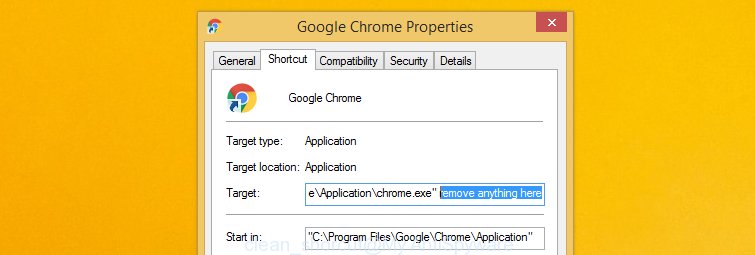
Next, click the “OK” button to save the changes. Now, when you launch the web browser from this desktop shortcut file, it does not occur automatically redirect on the Dkif.kafd.gdn web site or any other annoying web-pages. Once the step is done, we recommend to go to the next step.
Remove Dkif.kafd.gdn redirect from Google Chrome
If your Google Chrome web browser is re-directed to annoying Dkif.kafd.gdn web-page, it may be necessary to completely reset your web browser program to its default settings.
Open the Chrome menu by clicking on the button in the form of three horizontal dotes (![]() ). It will show the drop-down menu. Choose More Tools, then press Extensions.
). It will show the drop-down menu. Choose More Tools, then press Extensions.
Carefully browse through the list of installed extensions. If the list has the extension labeled with “Installed by enterprise policy” or “Installed by your administrator”, then complete the following guide: Remove Chrome extensions installed by enterprise policy otherwise, just go to the step below.
Open the Google Chrome main menu again, click to “Settings” option.

Scroll down to the bottom of the page and click on the “Advanced” link. Now scroll down until the Reset settings section is visible, like below and click the “Reset settings to their original defaults” button.

Confirm your action, click the “Reset” button.
Get rid of Dkif.kafd.gdn from FF by resetting internet browser settings
If your Mozilla Firefox browser is re-directed to Dkif.kafd.gdn without your permission or an unknown search provider opens results for your search, then it may be time to perform the browser reset.
First, open the Firefox and click ![]() button. It will display the drop-down menu on the right-part of the browser. Further, click the Help button (
button. It will display the drop-down menu on the right-part of the browser. Further, click the Help button (![]() ) as shown on the image below.
) as shown on the image below.

In the Help menu, select the “Troubleshooting Information” option. Another way to open the “Troubleshooting Information” screen – type “about:support” in the web-browser adress bar and press Enter. It will show the “Troubleshooting Information” page as shown below. In the upper-right corner of this screen, click the “Refresh Firefox” button.

It will show the confirmation prompt. Further, click the “Refresh Firefox” button. The Firefox will begin a procedure to fix your problems that caused by the adware that causes tons of annoying Dkif.kafd.gdn pop up advertisements. Once, it’s finished, press the “Finish” button.
Remove Dkif.kafd.gdn pop up advertisements from Microsoft Internet Explorer
The Internet Explorer reset is great if your web-browser is hijacked or you have unwanted addo-ons or toolbars on your browser, which installed by an malware.
First, start the Internet Explorer, then click ‘gear’ icon ![]() . It will display the Tools drop-down menu on the right part of the internet browser, then press the “Internet Options” like below.
. It will display the Tools drop-down menu on the right part of the internet browser, then press the “Internet Options” like below.

In the “Internet Options” screen, select the “Advanced” tab, then press the “Reset” button. The Internet Explorer will display the “Reset Internet Explorer settings” prompt. Further, press the “Delete personal settings” check box to select it. Next, click the “Reset” button as displayed on the screen below.

When the process is finished, press “Close” button. Close the IE and reboot your personal computer for the changes to take effect. This step will help you to restore your web browser’s newtab page, homepage and default search provider to default state.
Delete unwanted Scheduled Tasks
Once installed, the ad supported software can add a task in to the Windows Task Scheduler Library. Due to this, every time when you launch your computer, it will show Dkif.kafd.gdn annoying website. So, you need to check the Task Scheduler Library and get rid of all malicious tasks which have been created by adware.
Press Windows and R keys on your keyboard at the same time. It will display a prompt that called Run. In the text field, type “taskschd.msc” (without the quotes) and click OK. Task Scheduler window opens. In the left-hand side, click “Task Scheduler Library”, as displayed on the screen below.
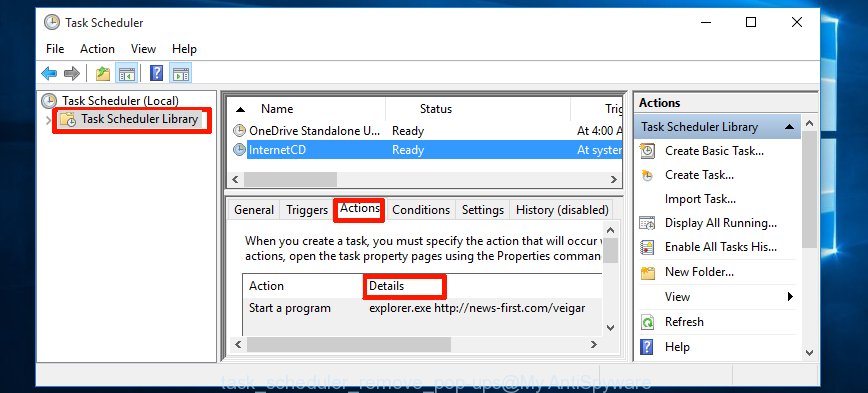
Task scheduler, list of tasks
In the middle part you will see a list of installed tasks. Select the first task, its properties will be open just below automatically. Next, press the Actions tab. Necessary to look at the text which is written under Details. Found something such as “explorer.exe http://site.address” or “chrome.exe http://site.address” or “firefox.exe http://site.address”, then you need get rid of this task. If you are not sure that executes the task, then google it. If it’s a component of the ‘ad-supported’ program, then this task also should be removed.
Further click on it with the right mouse button and select Delete as displayed in the figure below.

Task scheduler, delete a task
Repeat this step, if you have found a few tasks that have been created by malicious program. Once is complete, close the Task Scheduler window.
Dkif.kafd.gdn redirect automatic removal
Manual removal is not always as effective as you might think. Often, even the most experienced users can not completely remove ‘ad supported’ software that causes a large count of annoying Dkif.kafd.gdn ads. So, we advise to scan your PC for any remaining harmful components with free ‘ad supported’ software removal applications below.
Use Zemana Anti-malware to remove Dkif.kafd.gdn pop-up advertisements
We suggest you to run the Zemana Anti-malware which are completely clean your PC system of adware that cause intrusive Dkif.kafd.gdn popup ads to appear. Moreover, the utility will help you to get rid of PUPs, malicious software, toolbars and hijackers that your personal computer can be infected too.
Click the link below to download the latest version of Zemana Free for Windows. Save it on your MS Windows desktop or in any other place.
165508 downloads
Author: Zemana Ltd
Category: Security tools
Update: July 16, 2019
When downloading is finished, close all apps and windows on your computer. Double-click the install file called Zemana.AntiMalware.Setup. If the “User Account Control” prompt pops up as displayed in the figure below, click the “Yes” button.
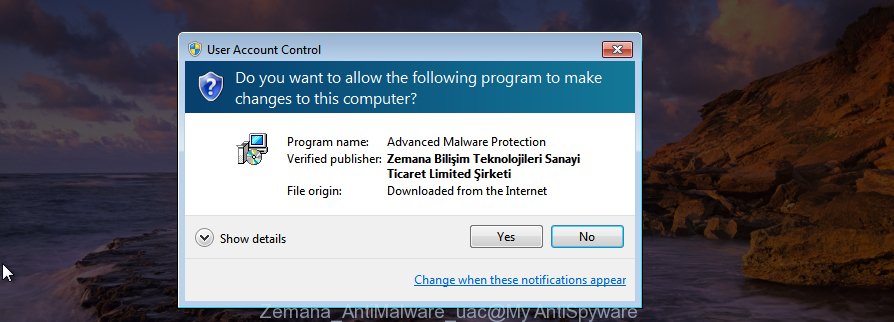
It will open the “Setup wizard” which will help you install Zemana AntiMalware (ZAM) on your system. Follow the prompts and don’t make any changes to default settings.

Once setup is done successfully, Zemana Free will automatically start and you can see its main screen as displayed in the figure below.

Now press the “Scan” button for checking your PC system for the adware responsible for Dkif.kafd.gdn redirect. This task can take some time, so please be patient. When a threat is detected, the number of the security threats will change accordingly. Wait until the the checking is finished.

As the scanning ends, Zemana will show a screen that contains a list of malicious software that has been found. Review the scan results and then press “Next” button. The Zemana Anti-Malware (ZAM) will delete adware related to Dkif.kafd.gdn pop ups. Once the process is finished, you may be prompted to restart the PC system.
Remove Dkif.kafd.gdn popup ads and malicious extensions with HitmanPro
The HitmanPro utility is free (30 day trial) and easy to use. It can scan and remove malicious software, potentially unwanted applications and adware in MS Edge, Google Chrome, FF and Internet Explorer internet browsers and thereby get rid of all annoying Dkif.kafd.gdn popup ads. Hitman Pro is powerful enough to find and remove malicious registry entries and files that are hidden on the computer.
Download Hitman Pro from the link below.
When downloading is done, open the file location and double-click the HitmanPro icon. It will start the Hitman Pro tool. If the User Account Control dialog box will ask you want to run the program, press Yes button to continue.
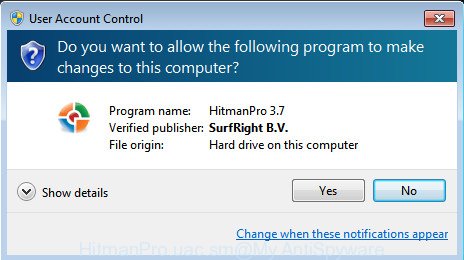
Next, press “Next” to begin checking your machine for the adware that causes internet browsers to display intrusive Dkif.kafd.gdn advertisements. When a malware, adware or PUPs are found, the count of the security threats will change accordingly. Wait until the the checking is done.
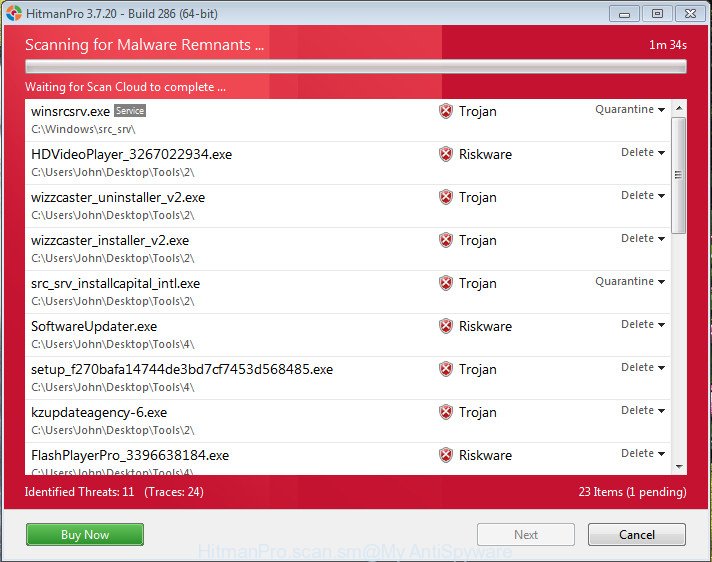
After the scanning is finished, you’ll be opened the list of all detected items on your computer as displayed in the figure below.
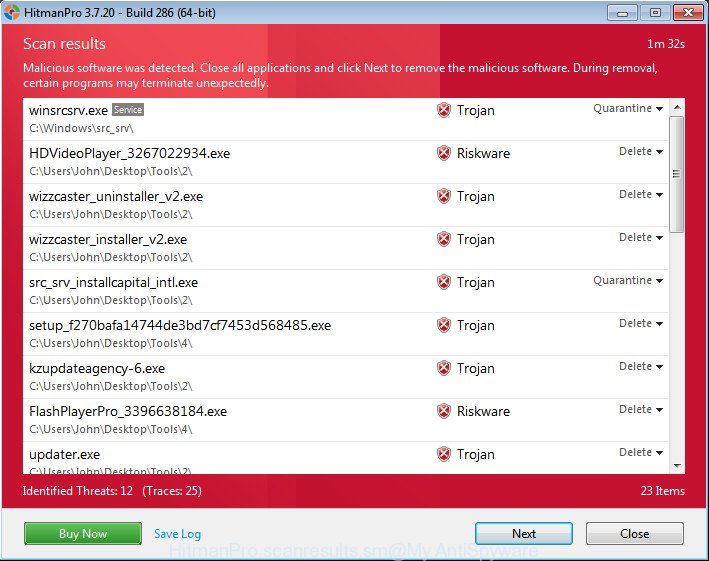
Review the report and then click “Next” button. It will display a dialog box, click the “Activate free license” button. The Hitman Pro will get rid of adware that causes multiple unwanted pop-up ads and move threats to the program’s quarantine. Once finished, the utility may ask you to restart your PC system.
Scan and free your personal computer of adware with Malwarebytes
You can delete Dkif.kafd.gdn advertisements automatically with a help of Malwarebytes Free. We suggest this free malware removal utility because it may easily remove hijacker infections, ad supported software, potentially unwanted applications and toolbars with all their components such as files, folders and registry entries.
Please go to the following link to download the latest version of MalwareBytes Anti Malware (MBAM) for Windows. Save it to your Desktop.
327729 downloads
Author: Malwarebytes
Category: Security tools
Update: April 15, 2020
When the download is finished, close all software and windows on your PC. Double-click the install file called mb3-setup. If the “User Account Control” prompt pops up as displayed in the figure below, click the “Yes” button.
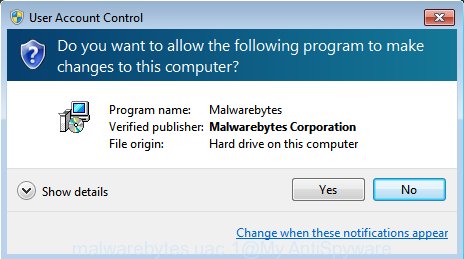
It will open the “Setup wizard” that will help you setup MalwareBytes AntiMalware (MBAM) on your computer. Follow the prompts and do not make any changes to default settings.
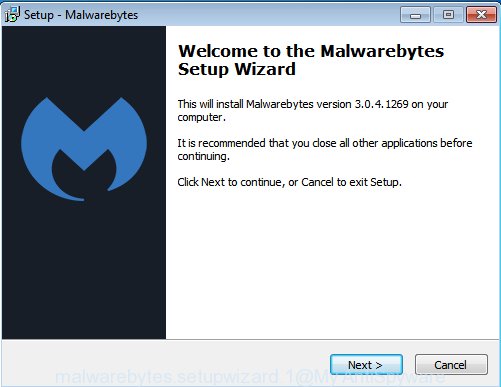
Once install is finished successfully, press Finish button. MalwareBytes will automatically start and you can see its main screen as shown on the screen below.

Now press the “Scan Now” button for checking your personal computer for the adware that designed to redirect your web-browser to various ad websites such as Dkif.kafd.gdn. When a malicious software, adware or PUPs are found, the count of the security threats will change accordingly.
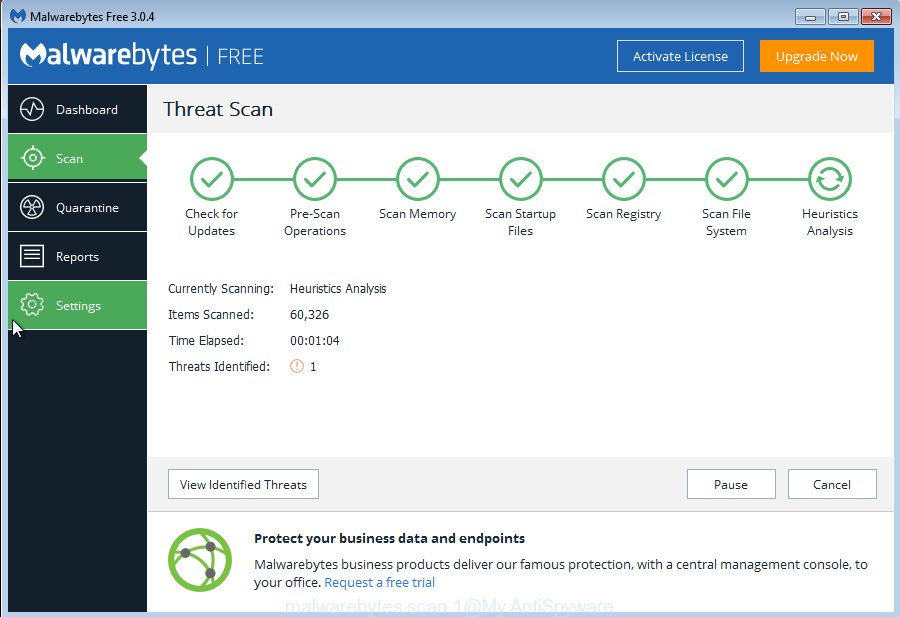
As the scanning ends, MalwareBytes Anti-Malware will display a list of all items detected by the scan. Make sure all threats have ‘checkmark’ and click “Quarantine Selected” button. The MalwareBytes will get rid of adware related to Dkif.kafd.gdn pop-up ads and add items to the Quarantine. After that process is complete, you may be prompted to reboot the machine.
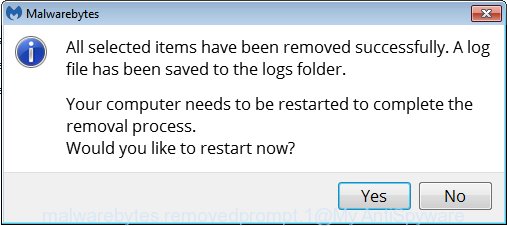
We recommend you look at the following video, which completely explains the procedure of using the MalwareBytes AntiMalware (MBAM) to get rid of adware, browser hijacker and other malware.
Block Dkif.kafd.gdn pop-up advertisements and other intrusive web pages
The AdGuard is a very good ad-blocking program for the Edge, Firefox, Microsoft Internet Explorer and Google Chrome, with active user support. It does a great job by removing certain types of intrusive advertisements, popunders, pop-ups, intrusive newtabs, and even full page advertisements and web-site overlay layers. Of course, the AdGuard can block the Dkif.kafd.gdn pop up ads automatically or by using a custom filter rule.
- AdGuard can be downloaded from the following link. Save it to your Desktop so that you can access the file easily.
Adguard download
27037 downloads
Version: 6.4
Author: © Adguard
Category: Security tools
Update: November 15, 2018
- After downloading it, run the downloaded file. You will see the “Setup Wizard” program window. Follow the prompts.
- After the install is complete, press “Skip” to close the installation program and use the default settings, or click “Get Started” to see an quick tutorial which will assist you get to know AdGuard better.
- In most cases, the default settings are enough and you do not need to change anything. Each time, when you start your computer, AdGuard will start automatically and stop popups, web-pages such as Dkif.kafd.gdn, as well as other harmful or misleading web sites. For an overview of all the features of the program, or to change its settings you can simply double-click on the icon named AdGuard, that may be found on your desktop.
How to Dkif.kafd.gdn pop up advertisements get installed onto personal computer
The ad-supported software most likely to occur during the installation of freeware due the fact that potentially unwanted programs like this are usually hidden in the setup file. Thus, if you’ve installed some free applications using Quick(Standard} method, you may have let the Dkif.kafd.gdn pop up advertisements get inside the internet browser. Keep in mind that the Quick mode is unreliable because it do not warn about bundled programs. Thus, additional programs will be installed automatically unless you select Advanced/Custom method and reject its installation.
To sum up
After completing the step by step instructions above, your machine should be free from adware related to Dkif.kafd.gdn pop-up advertisements and other malicious software. The Chrome, Firefox, Microsoft Internet Explorer and MS Edge will no longer redirect you to various unwanted webpages like Dkif.kafd.gdn. Unfortunately, if the instructions does not help you, then you have caught a new adware, and then the best way – ask for help in our Spyware/Malware removal forum.



















